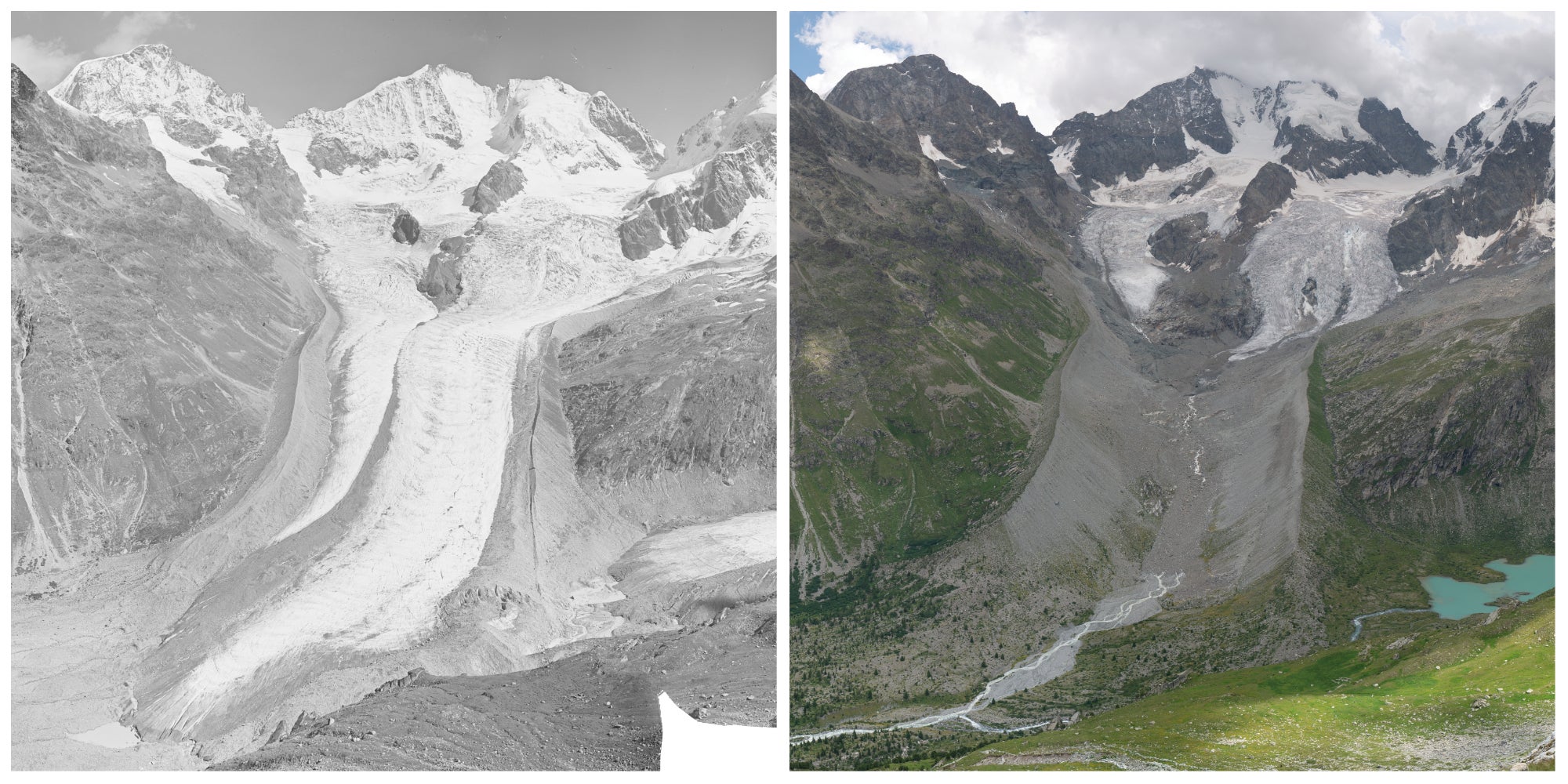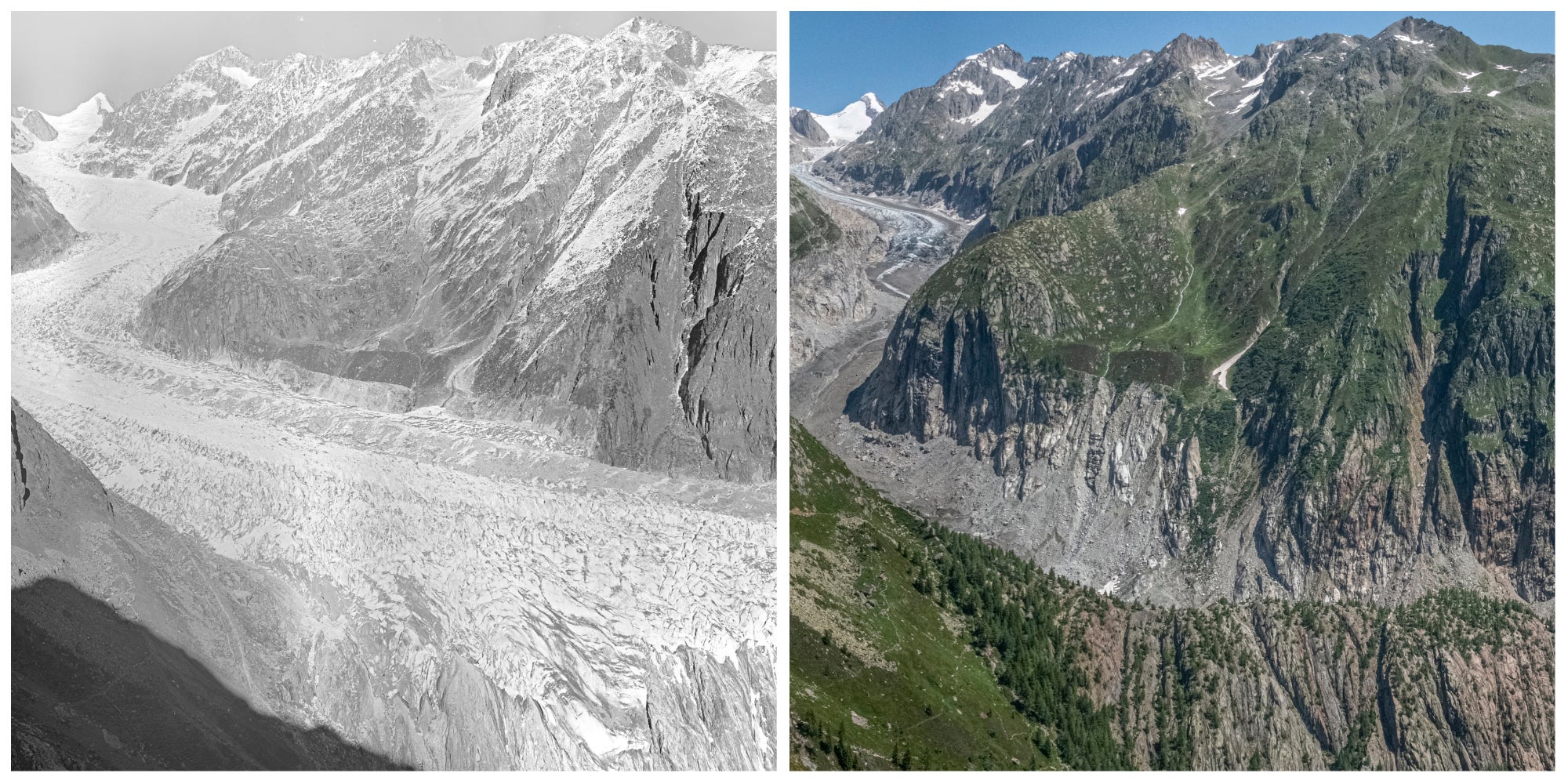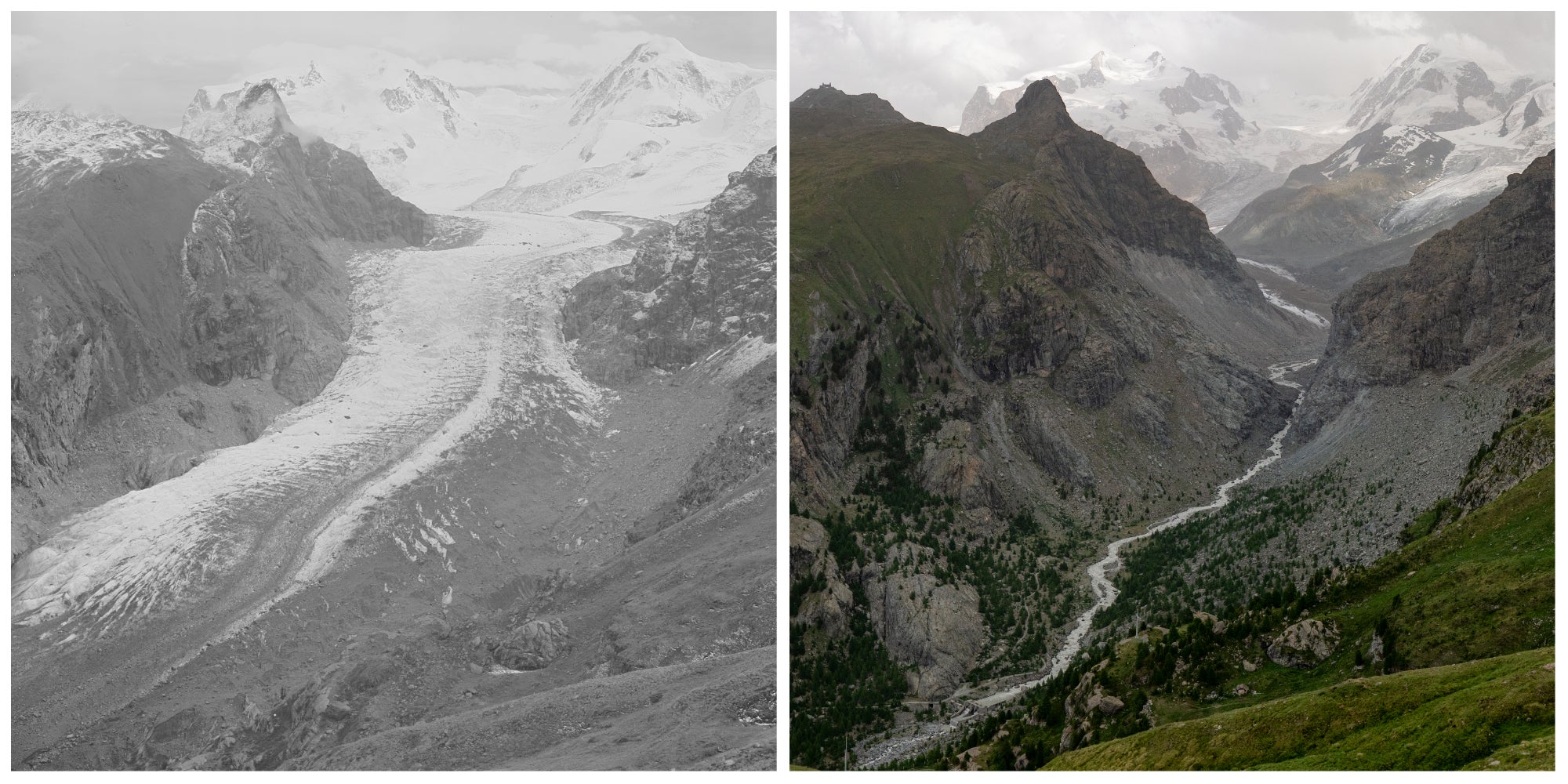The Swiss Alps have lost half their glaciers in 80 years
The Swiss Alps lost an additional 12 per cent of glacial ice in the six years between 2016 and 2021
Your support helps us to tell the story
From reproductive rights to climate change to Big Tech, The Independent is on the ground when the story is developing. Whether it's investigating the financials of Elon Musk's pro-Trump PAC or producing our latest documentary, 'The A Word', which shines a light on the American women fighting for reproductive rights, we know how important it is to parse out the facts from the messaging.
At such a critical moment in US history, we need reporters on the ground. Your donation allows us to keep sending journalists to speak to both sides of the story.
The Independent is trusted by Americans across the entire political spectrum. And unlike many other quality news outlets, we choose not to lock Americans out of our reporting and analysis with paywalls. We believe quality journalism should be available to everyone, paid for by those who can afford it.
Your support makes all the difference.The climate crisis is dramatically reshaping the Alps, leaving the mountain range’s glaciers mere fragments of their former selves.
Researchers in Switzerland recently documented just how bad that melting has become, estimating that the country has lost about half of all glacial ice since the 1930s.
Using photos from the early 20th century, the scientists were able to quantify how the climate crisis has impacted the mountains over the past eight decades.
Scientists at ETH Zurich, a Swiss university, and the Swiss Federal Institute for Forest, Snow and Landscape Research analysed photographs of the mountains taken between 1916 and 1947.
They were able to model how big the glaciers were during this period — with a median date of 1931 — and compare that size to the glacier size in 2016. Results were published this week in The Cryosphere.
Overall, they estimate that about 51.5 per cent of the glacial ice in the Swiss Alps has disappeared since 1931. That comes to an average of 0.73 cubic kilometres of ice lost per year.

Recent photos comparing glaciers in the Swiss Alps to the same locations in the early 20th century show dramatic ice losses.
Not all glaciers were equally affected. Glaciers in low-elevation areas, where it gets even warmer, melted more than high-elevation glaciers, they found. In addition, flatter glaciers and glaciers with more debris covering them melted more.
Glacier melt has been well-documented in the past 20 years, but there’s less understanding of just how much glaciers were shrinking before that, the study authors note. These data can help scientists gain a more long-term view of the climate crisis and its impacts.

That doesn’t mean the impact of a warming planet has been uniform over time. During the 1920s and late 1970s, some glaciers actually grew, the study says. But overall, glaciers in the Alps have been in a decline since the mid-19th century.
And melting has gotten even faster in recent years. While the Swiss Alps lost around half of their ice in more than eight decades between 1931 and 2016, they lost another 12 per cent in just six years between 2016 and 2021, the authors note in a press release.
The climate crisis is wreaking havoc on high-elevation corners of the Alps. Another recent study found that over three-quarters of the area in the mountains above the tree line — where it gets too cold or high up for trees to grow — has gotten greener in the past 40 years.

The Alps have warmed about 2 degrees Celsius (3.6 degrees Fahrenheit) since the start of the 20th century, according to the Mont Blanc Research Center for Alpine Ecosystems. That’s about double the worldwide average.
Glaciers all over the world have been shrinking as the planet heats up. A study last year found that the world’s glaciers lost about 267 gigatonnes of ice every year between 2000 and 2019 — about 800,000 times the weight of the Empire State Building every year.
With more warming, these trends are only likely to accelerate. In addition to upending mountain ecosystems and environments, melting glaciers are speeding up the rate of sea level rise around the world, putting many coastal cities at risk.




Join our commenting forum
Join thought-provoking conversations, follow other Independent readers and see their replies
Comments